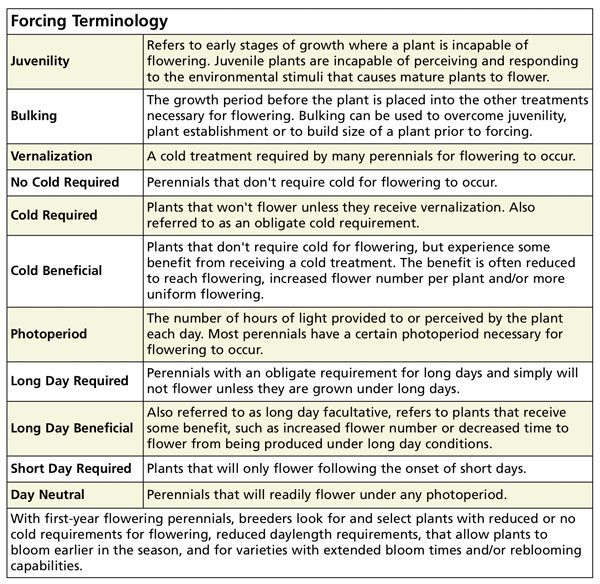8/1/2023
Are First-Year Flowering Perennials Worth the Hype?
Paul Pilon

With each year that passes by, breeders and plant marketing companies seem to introduce more and more new perennials often hyped as being first-year flowering (FYF). What exactly are FYF perennials? Do they truly perform as advertised or have the marketing geniuses brainwashed us into believing what they want us to believe?
Being involved in the perennial side of the industry for well over two decades now, I can tell you that the FYF perennials of today are superior to those that were marketed as such when I first dipped my toe into the perennial world. Here’s an all-too-brief, but effective, description of FYF perennials—perennials brought to the market with the purpose of being propagated from seed or cuttings and sold as a flowering plant in a single growing season, allowing them to be more easily grown and marketed alongside their bedding plant counterparts.
When perennials first became prevalent as a legitimate category of plants being marketed in our industry, flowering wasn’t required for sales and I even recall using the phrase “green is a color, too” when pulling orders of perennials being shipped to garden centers. Gradually, over time (beginning in the early 1990s, if I recall correctly), Michigan State University and others began looking at the requirements for flowering, allowing growers the ability to schedule crops to flower for spring sales, thus increasing our industry’s ability to sell more blooming perennials in the spring season because “color sells” after all.
So much was learned in the ’90s and thereafter about producing flowering perennials; however, I recall how all the specific requirements for each perennial—not to mention the hundreds of perennials in production at the time—were somewhat intimidating and made growing flowering perennials seem too complex for many growers.
Some of the key concepts learned included juvenility on perennials propagated by seed, the need for vernalization or a cold treatment, and the specific daylength (photoperiod) required in order for some plants to flower. Some perennials had more straightforward requirements than others, but several required this trifecta and wouldn’t flower unless all three requirements (juvenility, vernalization and photoperiod) were met. (See the sidebar for brief descriptions of these requirements.)
Once flowering perennials were gaining traction, some companies began marketing the first FYF perennials. As you can imagine, these plants were selected to have very short juvenilities (if they were from seed) and didn’t require a cold treatment in order for them to produce flowers. Plants on the market that already checked these boxes were seemingly grandfathered into the first-year flowering category. Soon thereafter, breeders were selecting cultivars that had no or reduced juvenilities and had no cold requirements.
Every advancement has to start somewhere, I suppose, and the promotion of FYF perennials wasn’t perfect by any means. I recall in the early FYF days there were several perennials that may have bloomed during the first growing season, but flowering appeared sporadic. It was there—just not horticulturally acceptable, in my opinion.
The reduced flower numbers in these cases where usually tied to vernalization. There were often plants that would flower without vernalization, but were actually classified as cold-beneficial plants. This means they flower best following a cold treatment. Sometimes the difference between a blooming plant without vernalization and a plant receiving a cold treatment in full color that you could actually sell were quite tremendous.
Fast forward 20 or 30 years and first-year flowering perennials are almost the norm. I mean, who introduces a perennial anymore that takes multiple seasons to produce a high-quality flowering plant? There’s been great emphasis in recent years on developing perennials with absolutely no cold requirements, which allows them to bloom profusely and uniformly without receiving any vernalization. This is the first step to annualizing the perennial market.
The second step is reducing the daylength requirement, shifting plants towards more day neutrality and allowing them to bloom earlier in the growing season.
The third advancement that wasn’t there just a decade or two ago is bloom longevity. Unlike many perennials of the past that proudly bloomed for short durations lasting from days to a paltry couple of weeks, today’s perennials loudly boast extended bloom times, even full season-long flowering with great reblooming potential after the old flowers are removed.
It's a totally different perennial field out there now than it was just 30 years ago. Although I thought first-year flowering perennials were overly hyped in the past, I’m proud to be in an industry that has turned the corner, so to speak, and whose breeders have worked so diligently to solve a problem perennial growers once faced—the inability to easily put together a blooming perennial program any time of the year flowering perennials are desired. Kudos to all! I’m looking forward to seeing the advancements over the next two to three decades as well. GT
Paul Pilon is editor-at-large of the Perennial Pulse e-newsletter and Director of Growing at Opel Growers in Hudsonville, Michigan. He can be reached at paul@opelgrowers.com.